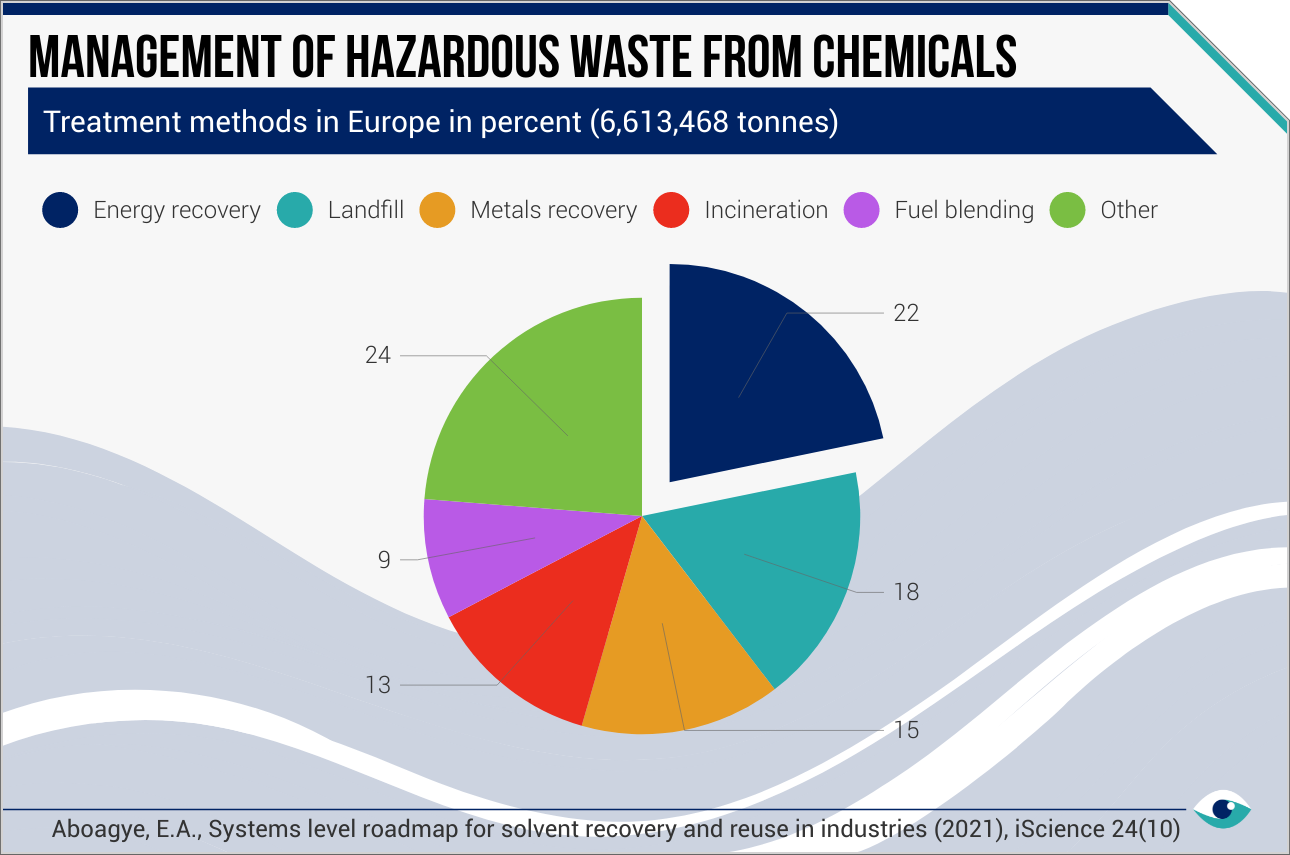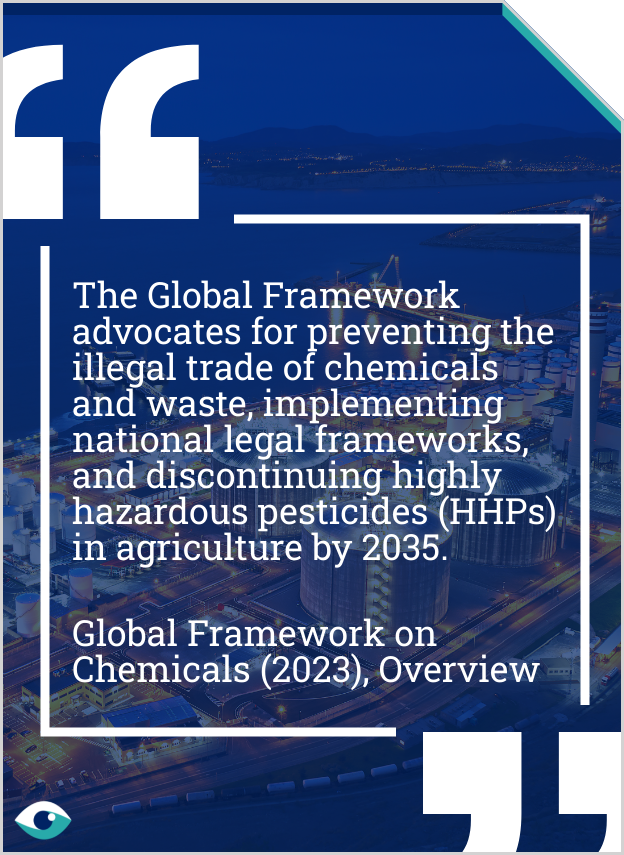The UN Strategic Approach to International Chemicals Management (SAICM), initiated, in 2006 advanced at the 2023 International Conference on Chemicals Management (ICCM). At the conference, 175 countries signed a UN accord including a target to end the global trade of illegal chemical waste by 2035. This trade is one of the most damaging environmental crimes performed globally – but also one of the most common. All companies will need to update their hazardous waste management standards to comply with the new framework. Avoidance is preferable, though options are also available with respect to reusing products or safe forms of hazardous waste disposal.

Global chemical waste trade to end by 2035, UN accord says
New SAICM framework targets illegal chemical waste; companies must enhance hazardous waste management and explore safer disposal options
Planet: Environmental impacts
Chemicals
Publication date: 08 Aug 2024
By James Bartlett
AT A GLANCE
The UN's 2023 ICCM accord mandates the end of global illegal chemical waste trade by 2035.
In the short term, businesses must upgrade hazardous waste management practices and explore reuse or safe disposal methods.
In the long term, the chemical industry will see reduced environmental impacts and costs, benefitting downstream industries.
Regional volume reduction
The Gulf region has made significant progress on hazardous waste reductions from chemicals, with hazardous waste intensity dropping from 3.3 kg per tonne of chemical to 1.1 kg (2022). Volumes of spent catalyst also decreased from 318 to just 29 tonnes and Saudi firm Sipchem reports reduced hazardous waste volumes from 8,889 to 2,250 tonnes. In the US and Europe hazardous waste volumes from chemicals production are roughly stagnant due to strict environmental regulations having already taken effect.
Solvent reuse options
Solvents comprise a large fraction of hazardous waste by volume globally and can be purified easily through simple distillation. However, solvent recovery comprises only 4% of hazardous waste treatment. In its latest disclosure, Bayer Crop Science reports on recycling of solvents at several production sites. Companies are also exploring bioremediation for treatment of hazardous waste. This breaks down the waste using microorganisms, plants or enzymes and produces biogas fuel as a by-product.

Reducing landfill in Asia
Some production of hazardous waste cannot be avoided due to technical limitations. The UN accord states that such material must be recycled or diverted from landfilling. In 2023, a USD 60 million hazardous waste disposal project was commissioned at the Shanghai Chemical Industry Park (SCIP) – a global Top 10 petrochemical site. The project will increase hazardous waste incineration from 120k T to 160k T. This is equivalent to 10% of chemical giant BASF’s hazardous waste incineration globally.

Benefits of taking action
The disposal of hazardous waste from the chemical industry is tightly controlled. However, there are still cases where waste is disposed of illegally resulting in severe consequences both for the planet and human health. Finding ways to reduce or reuse hazardous waste is the surest way of ensuring that such events do not take place. New ways of reducing or reusing these wastes also reduce costs for the chemicals industry, allowing companies to keep prices down for industries downstream.
